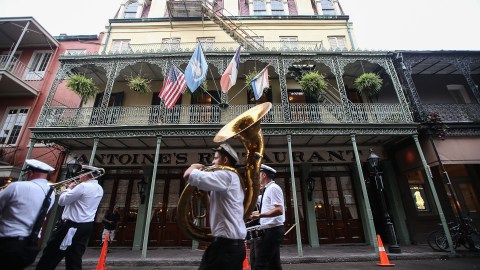Editorial: Latino Footprints in New Orleans
Hurricane Katrina revealed the lack of preparation at local, state and federal levels to deal with a weather phenomenon of this type

New Orleans, 10 años después. Crédito: Getty Images
SPANISH VERSION
The story of Latinos in New Orleans 10 years after Hurricane Katrina is a microcosm of the changes that immigrants go through in the United States, starting with the appreciation for the labor they are willing to perform ‒ since no one else will, ‒ and moving on to resentment and exploitation. The demographic transformation of the city is one of the various lasting remnants of the tragedy.
Hurricane Katrina revealed the lack of preparation at local, state and federal levels to deal with a weather phenomenon of this type. The levees were overpowered in the poorest areas; the images of a mostly African-American population virtually submerged in water are indelible, as is the memory of a federal government who underestimated the needs of these citizens and was accused of racism for its failure to act. It is estimated that the hurricane displaced nearly 400,000 people, mostly black, many of whom never returned to the city. Today, New Orleans is whiter and more Hispanic than ever before.
Considering this, it is no wonder that the city’s reconstruction ‒ with its federal funds and contracts ‒ has been a magnet for Latinos, who make up nearly 25% of all construction workers in the country. A small enclave of Hispanics already existed in the city. They welcomed and assisted the rescue workers ‒ mostly from Central America ‒ who came to fill a void.
Since then, these immigrants have worked hard and their efforts have often been appreciated. Still, their presence was resented by many who thought they would take jobs that should go to African-American workers. Many employers failed to pay them, choosing to call immigration authorities instead of doing their part of the deal. All this is well-known.
The reality is that, today, New Orleans ‒ with its over 33,000 new Latino inhabitants ‒ is more Hispanic than before, a fact that is not at odds with the local history. The city was governed by Spain for 40 years. After that ‒ when it was already under U.S. rule, ‒ “El Misisipi,” the first publication in Spanish in the U.S., was issued there. Also, the city’s commerce was tightly linked with the Central American banana industry.
The impact of Hurricane Katrina only brought about the return of Latinos to a region that is part of their history.




